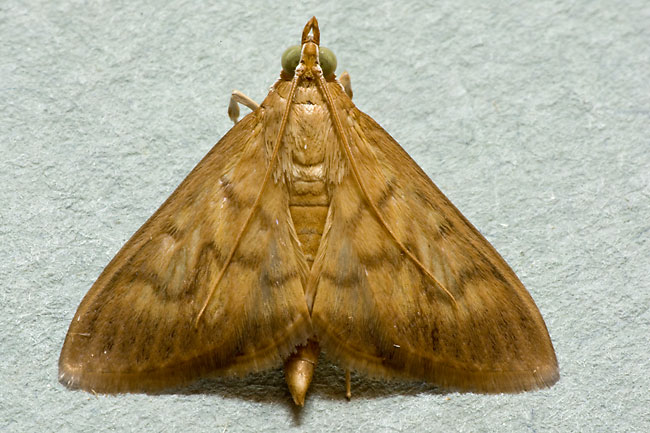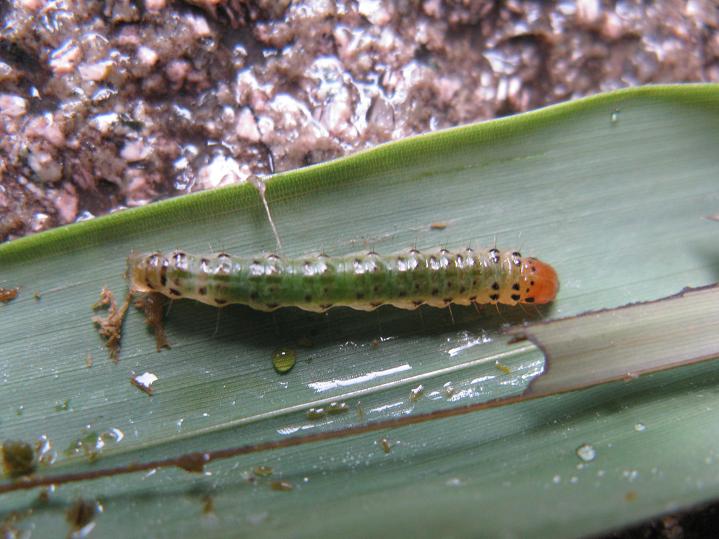
Bamboo leaf roller
| Primefact number | Edition | Published | Author |
|---|---|---|---|
| 1469 | First | May 2016 | Plant Biosecurity and Product Integrity |



Bamboo leaf roller (Crypsiptya coclesalis), also known as bamboo moth, was confirmed in New South Wales for the first time in April 2016 on bamboo.
Records in Australia prior to this detection were limited to Queensland and the Northern Territory.
Description
Adults
Adult bamboo moths (Figure 1) are yellowish brown in colour with a body length of 8–13 mm. The wingspan is 26–29 mm.
Immature stages
Bamboo moth caterpillars vary greatly in colour. Newly hatched caterpillars are green, often with a pattern of dark brown spots (Figure 2).
Later stage caterpillars change to a reddish brown colour without visible dark spots and can grow to 24 mm long (Figure 3).
Eggs are less than 1 mm in size, pale yellow and deposited in groups.
Damage
Bamboo moth caterpillars tie leaves together with silk to make protective leaf cases and feed on the leaf from within.
When about half the leaf is consumed the caterpillar leaves the old leaf case to make a new one. Later stage caterpillars create new leaf cases almost daily.
The outer surfaces of rolled leaves gradually wither, turn pale and drop off the plant. Attacked bamboo plants show discoloured, skeletonised leaves webbed together in bunches.
Lifecycle
Adult bamboo moths deposit eggs in groups on the underside of bamboo leaves. When eggs hatch the caterpillars feed and grow for 18–36 days. Fully grown larvae drop from the plant and pupate in the top layer of soil for 10–15 days before emerging as adults.
Bamboo moths overwinter as hibernating larvae. Up to four generations can occur per year depending on the suitability of the host plant.
Spread
Bamboo moths spread locally by adults flying.
Spread over greater distances can occur with the transport of eggs and larvae on infested plant material.
Hosts
Bamboo moth attacks many bamboo species including Arundinaria species, Bambusa vulgaris, Dendroclamus asper, D. giganteus, D. latiflorus, D. strictus, Phyllostachys pubescens, P. viridis and Schizostachyum pergracile.
Distribution
Bamboo moth is widely distributed throughout Asia and can be found in Japan, China, India, Bangladesh, Pakistan, Sri Lanka, Cambodia, Vietnam, Laos, Myanmar, Korea and Indonesia.
In Australia, bamboo moth has previously been recorded in Queensland and the Northern Territory.
Actions to minimise risk
Put in place biosecurity best practice actions to prevent entry, establishment and spread of pests and diseases:
- practice “Come clean, Go clean”
- ensure all staff and visitors are instructed in and adhere to your business management hygiene requirements
- monitor your crop regularly
- source plant material of a known high health status from reputable suppliers
- keep records

